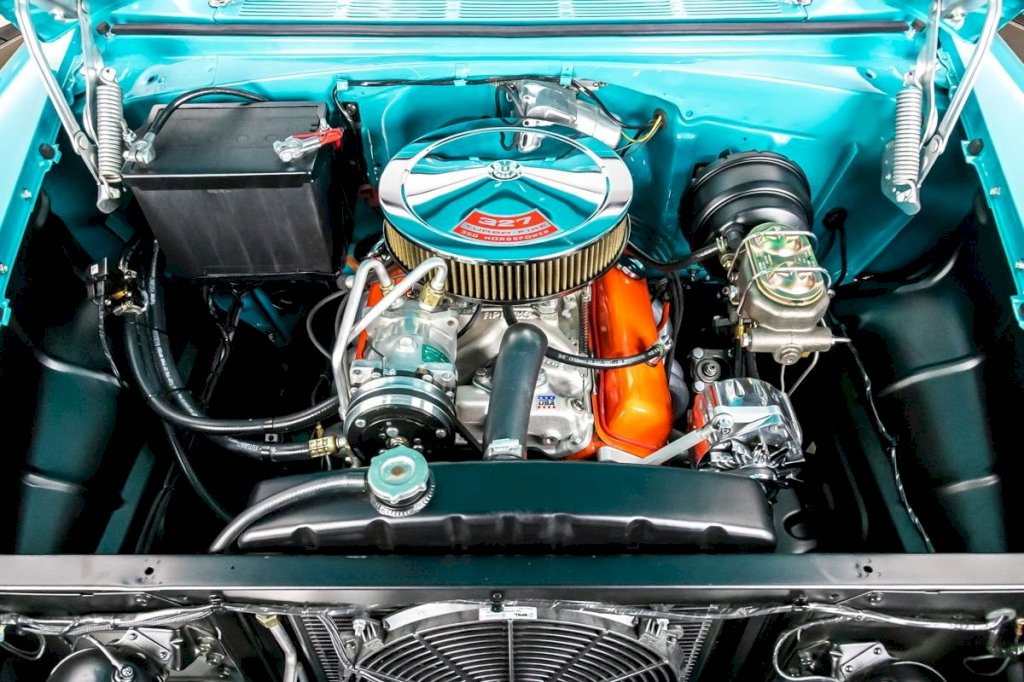The 1955 Chevrolet Bel Air is not just a classic car; it’s a symbol of mid-century American automotive design and innovation. Often referred to as the “Tri-Five Chevy” alongside its 1955 and 1956 counterparts, the ’55 Bel Air holds a special place in the hearts of car enthusiasts and collectors. In this comprehensive article, we will delve into the history, design, engineering, and cultural impact of the 1955 Chevrolet Bel Air, exploring what makes it an enduring icon of mid-century American automotive excellence.
Introduction
The Chevrolet Bel Air was a model line within the larger Chevrolet family of cars, but it became so much more than just a nameplate. The 1955 Bel Air, in particular, was a game-changer for Chevrolet and the entire American auto industry. It marked a departure from the mundane and utilitarian designs of the post-war years, introducing a new era of style and performance.
Historical Context
To understand the significance of the 1955 Chevrolet Bel Air, we must first consider the historical context in which it was conceived. The mid-1950s were a time of prosperity and optimism in the United States. The post-World War II economic boom was in full swing, and Americans were enjoying newfound affluence. This era gave rise to a growing fascination with cars as more than just utilitarian transportation; they became symbols of status and personal expression.
The 1950s also saw a surge in suburbanization, with families moving away from cities to quieter, more spacious suburban neighborhoods. This change in lifestyle created a demand for larger, more comfortable, and stylish cars that were well-suited for the open road.
Chevrolet, recognizing these cultural shifts, decided to capitalize on the demand for stylish and powerful automobiles, leading to the birth of the 1955 Chevrolet Bel Air.
Design and Styling
One of the most defining features of the 1955 Chevrolet Bel Air was its bold and eye-catching design. Chevrolet’s chief designer, Harley Earl, and his team crafted a car that exuded both elegance and power. The ’55 Bel Air featured a sleek, chrome-laden front end with a distinctive grille and bumper design that became an instant classic.
But perhaps the most iconic element of the ’55 Bel Air was the now-famous “shoebox” design, characterized by its smooth lines, wide fenders, and wraparound windshield. This design made the Bel Air stand out from its competitors and gave it a timeless appeal that continues to captivate enthusiasts to this day.
The 1955 Bel Air was available in various body styles, including a two-door coupe, two-door sedan, four-door sedan, and even a convertible. This versatility allowed buyers to choose a model that suited their preferences and needs, making the Bel Air a practical choice for families and individuals alike.
V8 Power

While the design of the 1955 Chevrolet Bel Air was a significant draw, its true innovation lay under the hood. This was the year Chevrolet introduced the small-block V8 engine, which would become legendary in the automotive world. The base V8 engine offered 162 horsepower, while the optional “Power Pack” version produced 180 horsepower, giving the Bel Air impressive acceleration and performance.
The availability of a V8 engine was a game-changer for Chevrolet and the industry as a whole. It set the stage for the muscle car era, as power-hungry enthusiasts began to embrace the small-block V8 and modify it for even more performance.
Cultural Impact
The 1955 Chevrolet Bel Air had a profound cultural impact that extended beyond the automotive world. It became an icon of 1950s Americana, symbolizing an era of prosperity, optimism, and youthful exuberance. The car featured prominently in movies, television shows, and advertisements, solidifying its place in popular culture.
The ’55 Bel Air was not just a car; it was a status symbol. Owning one meant you had arrived, and it conveyed a sense of style and sophistication. The car’s timeless design and reputation for reliability made it a favorite among families and car enthusiasts alike.
Enduring Legacy
The legacy of the 1955 Chevrolet Bel Air lives on through the countless enthusiasts, collectors, and restorers who continue to cherish and preserve these classic cars. Restored ’55 Bel Airs are prized possessions, often meticulously maintained to showcase their original beauty and performance.
The availability of reproduction parts and the enduring popularity of the Tri-Five Chevys have made it possible for new generations to experience the joy of owning and driving a ’55 Bel Air. The classic car community regularly hosts events and shows dedicated to these iconic vehicles, fostering a sense of camaraderie among enthusiasts.
Conclusion
The 1955 Chevrolet Bel Air is more than just a car; it’s a symbol of an era. It represents a time of prosperity, innovation, and a cultural shift towards embracing style and performance in everyday life. The ’55 Bel Air’s timeless design, groundbreaking small-block V8 engine, and cultural significance have solidified its place as an enduring icon of mid-century American automotive excellence.
Whether seen on the open road, in classic car shows, or in popular media, the ’55 Bel Air continues to captivate and inspire. It reminds us of a time when the American automobile industry was at its zenith, creating not just cars but works of art that continue to evoke nostalgia and admiration in the hearts of car enthusiasts and collectors worldwide. The 1955 Chevrolet Bel Air is, and will always be, a shining symbol of mid-century automotive excellence.





